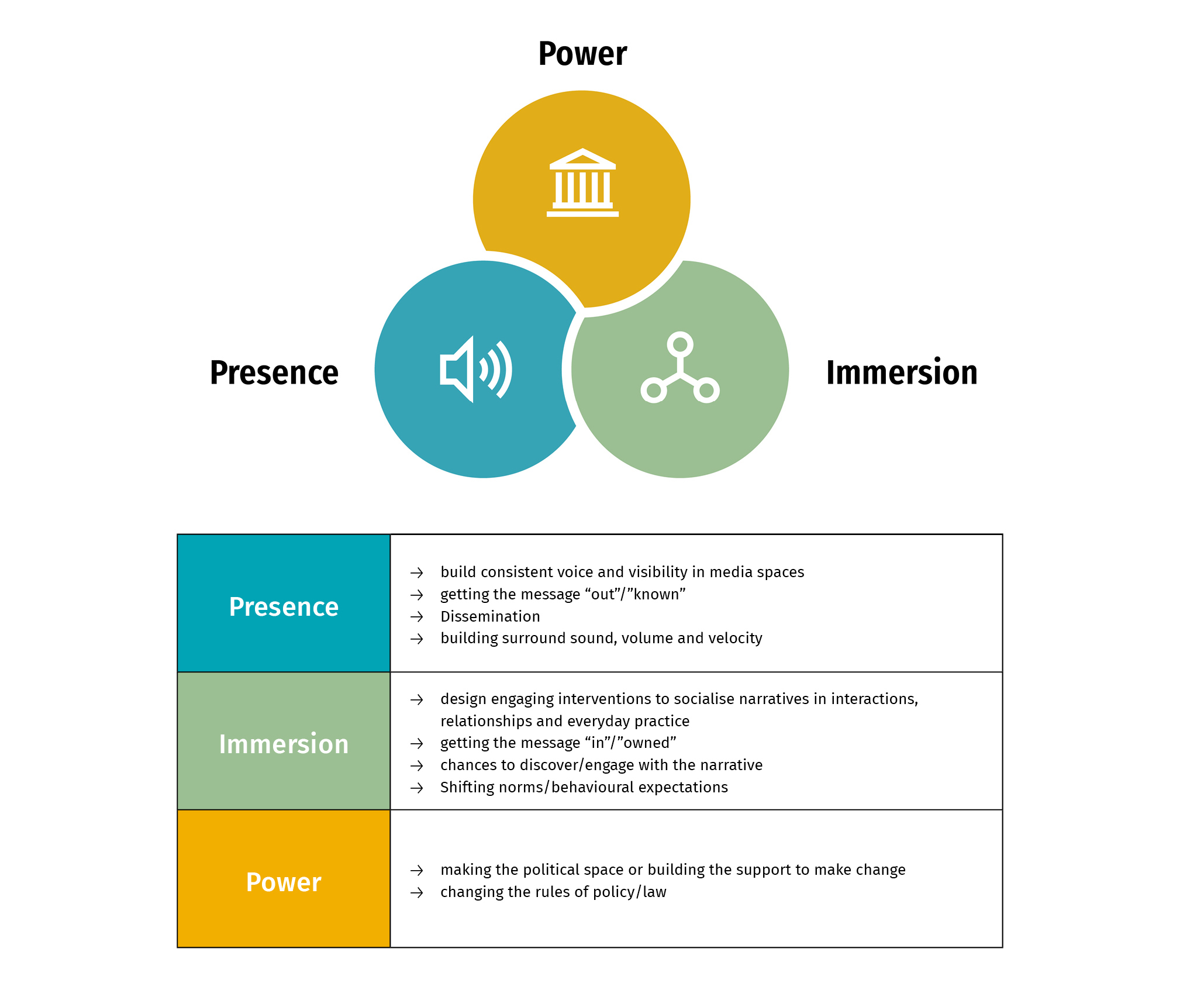Section 5 – Proactive Strategic Communications Responses
A key pillar of the narrative attacks on CSOs is focused on undermining trust in the sector; hence, for CSOs and their supporters to be effective in their response, they need to adopt a multi-pronged approach. This means both safeguarding existing positive public attitudes towards CSOs and more broadly working to build broader public support for the sector and thereby, rebuild trust in the sector.
Achieving this requires an ongoing and proactive communications/advocacy approach in tandem with specific efforts to counter defamatory and vilifying narrative attacks on targeted individuals and organisations. Many practitioners and authors already recognise this need to actively work on rebuilding trust as a key element of responses on attempts to shrink civic space1
. This goal of proactively safeguarding and rebuilding trust in the sector is at the heart of the civic space narrative change work we’ve supported in Kazakhstan (See case details in Section 6) and more recently, in Germany.
Our approach to this proactive communications work is outlined in our framework on strategic communications with the target of building presence of positive narratives as the attainable first level goal of campaigning. Applied to civic space work, this means working to build “surround sound, volume and velocity”2
of positive stories which illustrate the value and values of the civil society sector. The following diagram shows this strategic communications goal of presence as one of three key target levels for achieving lasting change, together with immersion and power. The table below synopsises the different foci of the three levels.

Figure 11 – Strategic Communications Levels (as defined by ICPA)
Based on this strategic communications framework, the logic of our approach to civic space narrative change work is based on the idea of the Overton window3
, i.e. that the public debate sets the boundary of acceptable policy and legal choices. For example, it is evident that even in less democratic states, authoritarians see the need for an extreme ‘foreign agent’ narrative and accusations of corruption as justification for extreme legal measures and vilification. It therefore, follows that building broader public support and trust in the sector would mean far less motivation, momentum or political space to shrink civic space.
In tactical and practical terms, our work supports advocates to build, test and rollout narrative change strategies which target the broader public of ‘movable middle’ audiences in order to (re)build support for civil society. Our empirically-tested approach has time and time again demonstrated that storytelling based on values-based narratives does engage and shift key attitudes of the middle audiences on civic space issues, even in more challenging environments. Specifically, in Kazakhstan, campaign material that told positive stories of CSO work addressing common challenges and appealing to values of community, solidarity and charity moved middle audiences by three times the average in the positive on the key attitudes that need to be strengthened to rebuild trust in the sector (see Advocacy Cases in Section 6 for more detail, resource on message testing methods, and our evaluation framework for measuring effectiveness of narrative change efforts).
While this result shows promise, obviously a longer-term change is needed in order for these more positive and trusting attitudes to become much more widely held, and ultimately, become the norm. A strategic communications framework supports planning and conducting this multi-pronged and staged proactive work to achieve the bigger picture goal of rebuilding trust and safeguarding the sector to play its legitimate role. In practical terms, building presence of such narratives entails considerable investment of time, money and effort and would require multiple actors or a movement-based approach to create the level of presence and saturation of narratives needed to tip the balance of the debate – that is the need, challenge and opportunity which strategic communications thinking can support.
<-- Section 4 - 10 Lessons | Section 6 - Advocacy Cases -->
- 1Ariadne (2016) Challenging the Closing Space for Civil Society: A practical starting point for funders; Israel Butler, Liberties (2021) How to talk about civic space: a guide for progressive civil society facing smear campaigns; Civicus (2019) Against the wave: Civil society responses to anti-rights groups; International Civil Society Centre & Just Labs (2019) Civil Society Innovation and Populism in a Digital Era; Kapronczay and Kertesz, Global Dialogues (2018) Dropping the defence: hopeful stories fight stigma in Hungary; Lifeline (2022) Reanimating civil society: A Lifeline guide for Narrative Change
- 2Frank Sharry, America’s Voice
- 3Makinac Center for Public Policy (2024) The Overton Window